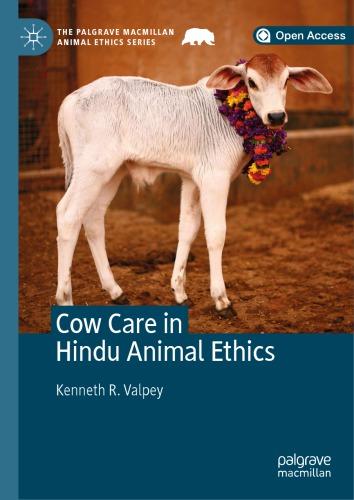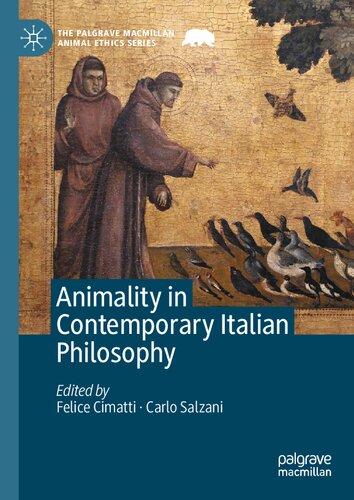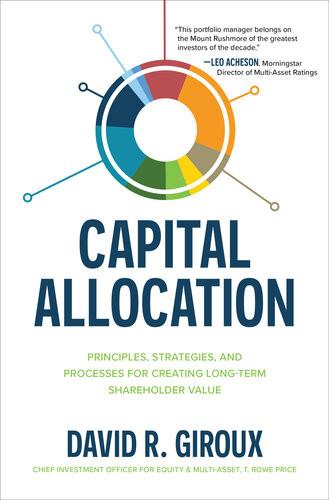Introduction
Exploring the Ethics of Animal Shelters
Valéry Giroux, Angie Pepper, and Kristin Voigt
I.1 Background
A vast number of companion animals live in shelters. Precise numbers are hard to come by, but the fragments of information we have suggest that globally the figure is in the millions. Mars Petcare has devised a State of Pet Homelessness Index which estimates that, across the United States, United Kingdom, India, Mexico, Germany, Russia, South Africa, China, and Greece, there are 224 million homeless dogs and cats, with 20 million of those animals currently being housed in shelters (Mars Petcare 2021). In the United States alone it is estimated that about 5.4 million animals enter shelters each year (Mars Petcare 2021); the American Society for the Prevention of Cruelty to Animals puts this number at 6.5 million (ASPCA 2022). And Humane Canada reports that, in 2019, Canadian SPCAs and humane societies took in about 78,000 cats and 28,000 dogs as well as 11,000 animals of other species (Humane Canada 2020).
As these numbers suggest, cats and dogs represent a large proportion of the shelter population but many shelters also house less common companion animals such as rabbits, as well as exotic animals such as turtles and parrots. Some shelters also take in animals saved from farms or research laboratories, and some also care for orphaned, injured, and sick wild animals. Many shelters are part of larger animal protection organizations that seek to contribute to
Giroux, Angie Pepper, and Kristin Voigt
broader social change for animals, for example by seeking changes in legislation governing the “use” of animals. In some contexts, such as several Canadian provinces, animal protection organizations not only run shelter and advocacy programs but also monitor individuals’ and corporations’ compliance with animal welfare legislation.
The everyday operations of animal shelters and animal protection organizations involve a large number of ethical decisions, arising at different levels of the organization. The most challenging ethical decisions involve the treatment of animals in need of rescue and animals who reside within the shelter. For example, given the resource and space constraints that shelters struggle with, a recurring ethical question is whether specific animals should be killed.1
Particularly difficult cases involve individuals who have medical conditions that can be treated but only at significant cost to the shelter and individuals who are healthy but unlikely to be adopted because they are unpopular or because they have complex needs that are more difficult for potential adopters to meet. Similarly, difficult decisions must be made about shelter adoption policy, quality-of-life assessments, palliative care provision, shelter animal diets, and the termination of pregnancies, among many others.
In addition to making decisions about shelter animals, animal protection organizations must also determine how to interact within and toward the wider social and institutional environment in which nonhuman animals are routinely exploited. For example, most, if not all, shelters operate in social and legal contexts that typically regard animals as property and not persons. In such contexts, large-scale factory farming is widely accepted and continues to expand, as does the use of animals in biomedical research, and animals are frequently kept captive and used for human entertainment and labor purposes. How explicit a stance should such organizations take against such practices? On the one hand, an organization concerned with protecting the welfare of nonhuman animals should arguably address the welfare of all animals, not just companion animals. On the other hand, if shelters express strong public opposition to such practices, that could alienate donors who are primarily concerned with companion animals—not, for example, farmed animals,
laboratory animals, zoo animals, or law enforcement animals—and thereby reduce the resources available to the organization.
This last point is important. Most animal protection organizations are charities and therefore rely heavily on successful fundraising and the goodwill of donors. This means that the public image of such organizations is crucial to their capability, success, and longevity. This adds a further layer of complexity to decision-making in animal shelters. Since decisions made by animal protection organizations can be subject to public scrutiny, how such decisions will be received by the public must also be considered. If members of the public perceive shelter decisions as problematic, this can lead to public criticism, reduced public trust, and decreases in donations. A prominent example of this occurred when animal rights advocacy group People for the Ethical Treatment of Animals (PETA) was found to kill large numbers of animals in its shelter. This was met with severe criticism from both the public and other animal protection organizations. PETA defended its approach, arguing that many animals arrive at the shelter in such poor condition that ending their suffering is the only thing that can be done for them and that while “no-kill” policies might be feasible in shelters that can simply turn down animals when they are at capacity, they are not appropriate for open-admission shelters such as the one operated by PETA.2 Controversies such as this can do significant damage to the reputation of animal protection organizations.
The ethical dimension of the decisions that must be taken in shelters and the complexity of the ethical questions at hand are, of course, not lost on these organizations. The UK’s Royal Society for the Prevention of Cruelty to Animals (RSPCA), for example, recently outlined some of the ethical challenges it faces in an article, “Difficult Decisions,” noting that “the RSPCA has to grapple with a number of ethical dilemmas on a daily basis” (RSPCA 2010). Despite the prominence of ethical questions in the operation of animal shelters, there is very little philosophical work that investigates these questions. While there is some work on veterinary ethics (e.g., Rollins 2006; Wathes et al. 2011; Linzey and Linzey 2017) and the ethical guidelines published by veterinary organizations, such as
the American Veterinary Medical Association (AVMA 2019) and the Canadian Veterinary Medical Association (CVMA 2004), this work typically does not speak to the very distinct situation of animal shelters, which face a very different set of circumstances than, say, veterinarians in private surgeries. Work on shelters (e.g., Miller and Zawistowski 2013; Weiss et al. 2015) addresses various aspects of shelter management but for the most part does not address the ethical questions that are important to this work. Finally, to the extent that ethical questions are identified and discussed in these literatures, they typically fail to challenge problematic ideas about the status of nonhuman animals. For example, Rollins (2006) does not explicitly oppose the use of animals for food, nor does he challenge the idea that companion animals have “owners.” Our goal in this volume is to speak to the ethical challenges faced by animal shelters, many of which are created or complicated by the particularities of the shelter environment, and to do so in a way that is consistent with nonhuman animals’ moral status.
This volume is the outcome of a collaboration between a team of animal ethicists and representatives and employees of an animal shelter, the Montreal Society for the Prevention of Cruelty to Animals (Montreal SPCA). Our objective was to identify the most pressing questions that animal shelters face and to offer recommendations on how to respond to these questions, taking into account the many constraints that shelters must operate under. Importantly, these recommendations were to be informed by and consistent with a commitment to taking seriously the moral status of nonhuman animals. The recommendations developed as part of this project are reproduced in Part I of this collection. Part II brings together a set of chapters that explore in more detail some of the ethical questions involved in everyday animal shelter operations.
While our primary audience for this volume is shelter employees, we also hope that it can create and contribute to debates among philosophers and animal ethicists. Philosophers’ work, even in the field of “applied philosophy,” is all too often far removed from the messy complexity of the real world, focusing instead on highly abstract questions on the basis of a range of idealizing assumptions.
Working with people who must navigate ethical questions in the real world gives us a better appreciation of the many factors and considerations that fall out of the picture when we engage in the kind of abstraction philosophers are used to and of how we might make philosophical work useful for practical contexts.
With this introduction, we hope to provide some more information about this project. We begin by offering some details about the Montreal SPCA so that readers can get a sense of its mission, structure, and range of responsibilities (Section I.2). We then describe some of the practical steps we took in developing this project (Section I.3). This is important for understanding the context of our practical recommendations and the particularities of the Montreal SPCA, which will help readers who work in shelters get a sense of where their own organizations differ in ways that require adaptation of the recommendations offered here. Section I.4 describes the “practitioner-driven” methodology that informed the project. This methodology was central to the project, and we hope that it can be helpful for philosophers who are also planning or considering collaborations with practitioners. Section I.5 discusses our hope that the guidelines can be useful for animal shelter staff, including staff at shelters whose work differs substantially from that of the Montreal SPCA. We offer some thoughts on which aspects of our recommendations can easily be extended to other shelters and some suggestions on those that may need to be adapted if they are to be suitable for different shelter environments. In Section I.6, we identify and discuss some of the themes that will come up, implicitly or explicitly, in the chapters included in Part II. The final section briefly summarizes the practical guidelines included in Part I and the individual chapters that constitute Part II of this collection.
I.2 About the Montreal SPCA
Founded in 1869, the Society for the Prevention of Cruelty to Animals (SPCA) was the first animal welfare organization in Canada. Now known as the Montreal SPCA, it is still one of Canada’s
most prominent animal rescue organizations and carries out a wide range of activities, such as sheltering abandoned animals and arranging adoptions, providing veterinary care for companion animals and urban wildlife, investigating and enforcing violations of animal welfare legislation, and undertaking advocacy work. The official mission of the Montreal SPCA is to protect animals from neglect, abuse, and exploitation; represent their interests and ensure their welfare; promote public awareness; and help foster compassion for all sentient beings.
A detailed account of the history of the Montreal SPCA was published in 2019, the organization’s 150th anniversary (SimoneauGilbert 2019). This book recounts the transformations undergone by the organization from its creation to the present day as the sociocultural, technological and economic realities of the city of Montreal have shaped the presence and use of animals on its territory.
Simoneau-Gilbert explains that the Montreal SPCA has not always defended the rights of all animals: it began by focusing primarily on the neglect and abuse of horses and then came to focus almost exclusively on companion animals. In addition, while the welfare of companion animals was at the heart of its mission, it is only recently, through the leadership of Alanna Devine, who acted as the organization’s interim executive director between 2008 and 2011, that significant efforts were made to reduce the number of cats and dogs brought to the shelter to be killed by encouraging the adoption and spaying/neutering of these animals. Along with this, there has been significant lobbying to strengthen animal protection laws and extend their application to laboratory animals, animals raised for their fur, and farmed animals. Increasingly concerned about the fate of farmed animals, the Society also decided in 2012 to adopt a policy requiring that food served at its events be plant-based. Other measures aimed at discouraging the consumption of food from animals raised in factory farms and improving the fate of farmed animals have been put forward. Among those was the “Truth in Labelling” campaign designed to convince the Canadian Food Inspection Agency (CFIA) to regulate the use of animal welfare labels, which are too often misused. There was also the investigation led by the
Montreal SPCA after the broadcasting of images illegally filmed in a Quebec milk-fed calf farm, which led to the conviction of an employee and the “Transport Reform” campaign aimed at improving Canadian legislation concerning the transportation of farmed animals from the farm to the slaughterhouse.
While the Society has historically been relatively conservative, the examples given above show that the past few decades have seen it take on more ambitious goals. Shortly after Élise Desaulniers—a leading figure for veganism in Quebec who has published several books on the subject (Desaulniers 2011, 2013, 2016) and frequently speaks about it in the media—took over the direction of the Montreal SPCA in 2017, the “AniMAL” campaign was launched to raise awareness of the plight of farmed animals and to obtain better protection for their well-being. If the Society’s positions are still essentially welfarist, in the sense that it is first and foremost the way in which animals are treated that is its main focus, one can feel an abolitionist and antispeciesist trend emerging: its positions in favor of the abolition of certain practices, such as carriage rides or fur farming, as well as its promotion of veganism through the publication of a book of entirely plant-based recipes, clearly show this. Indeed, this latest phase of the Montreal SPCA’s evolution now means that it is widely considered to be more progressive and ambitious than most other humane societies in Canada.
I.3 The Stages of the Project
This project began in 2017, with an informal conversation between Élise Desaulniers, who had just been appointed Executive Director of the Montreal SPCA, and two of the co-editors of this volume, Valéry Giroux and Kristin Voigt. Desaulniers described the many ethical challenges the organization faces and noted that the Montreal SPCA’s existing policies provided little or no guidance on responding to these challenges. These conversations helped us see the important role that philosophers—especially animal ethicists— could play in filling the gap in the Montreal SPCA’s policies and
Valéry Giroux, Angie Pepper, and Kristin Voigt
guidelines. We began to develop a plan for what a collaboration between philosophers and shelter staff might look like and what it might achieve. We then assembled a team of philosophers who we knew would be interested in being involved in a project with such a practical focus and organized our first team meeting in October 2018. The meeting was held on the premises of the Montreal SPCA, not only to make it easy for staff to join us for (parts of) the meeting but also to allow the researchers to gain an understanding of the physical space of the organization and its various departments. The sounds of the shelter provided a powerful backdrop for our conversations.
The aim of this meeting was to identify the major normative issues and questions that arise in the SPCA’s day-to-day work, which of these are considered most urgent or pressing by staff, how these challenges are experienced by staff, how SPCA employees currently respond to them, and which constraints—resources, time, etc.— affect their work. We also wanted to get a sense of how precisely philosophers could make a helpful and meaningful contribution to this work. Based on the conversations at this meeting, we wrote a discussion paper that summarized the questions identified as well as the Montreal SPCA staff members’ accounts of the constraints they face in dealing with them.
Over the next few months, we began drafting both the Guidelines as well as a number of papers that would allow the ethicists to engage in more detail with specific questions arising in the shelter context. We met again at the Montreal SPCA in March 2019, to present the Guidelines with the staff, get feedback on our proposals, and allow for discussions among the entire team—practitioners as well as philosophers. On the basis of this feedback, several rounds of further revisions were made to arrive at the final version.
I.4 Methodology
While philosophers are increasingly trying to apply their expertise to real-world problems, even “applied” or “real-world” philosophy
often proceeds from various idealizing assumptions. This approach, however, often makes the conclusions philosophers draw less useful for practical purposes than they might be if they tackled the “messiness” of the real-life situations head-on. We hope that our project can provide one example of how to engage directly with practitioners facing difficult ethical challenges to make philosophical work more relevant for the real world.
In this project, we started from the assumption that philosophers can contribute meaningfully to real-world questions such as those arising in animal shelters only if they engage in dialogue with practitioners in the field. For this reason, we relied on what we called a “practitioner-driven” methodology. There were a number of components to this approach. First, rather than having the ethicists identify the ethical questions that they wanted to investigate, we wanted to hear from practitioners which questions or problems they thought were most pressing or difficult in their work. The questions to be addressed in this project were driven by practitioners’ understanding of the ethical challenges they face and their assessment of which of these are the most urgent and/or most timely to address. This method allowed our team of researchers to look at issues that they would never have identified were it not for interviews with Montreal SPCA employees. For example, our team members were surprised to learn that the staff working in the shelter division were concerned about the amount of resources the enforcement team would spend on individual animals rescued from situations of criminal neglect or serious abuse. One of the recommendations we made in response to this problem was to separate the budget among different units so that different divisions of the organization could make their own decisions about how to allocate their resources without this reducing the amount available for other activities. This particular suggestion has been the subject of deeper reflection, the results of which are presented in detail by Sue Donaldson and Will Kymlicka (Chapter 7, this volume). Another of our recommendations that addresses this concern is the creation of an Ethics Board, which the Montreal SPCA can ask to investigate specific questions and offer advice on particularly challenging cases or issues. This suggestion is
explored in more detail in Angela Martin’s chapter (Chapter 3, this volume).
Second, we understood that for our proposals to be a valuable tool for staff, they must be consistent with the constraints that shape what shelters can and cannot do. We used our conversations with the Montreal SPCA staff to get as much insight as possible on the limitations and considerations that shape how they can respond to the problems they are facing. Knowing which solutions would fail immediately because they relied on resources that the shelter did not have was crucial to the project. While, of course, financial and space constraints loom large for the Montreal SPCA, as they do for many animal shelters, it was important to learn about other, less obvious considerations as well. For example, the fact that the shelter relies on donations from pet food companies might restrict what changes can be made with respect to the food fed to shelter residents. Another example of such constraints arose in considering whether the Montreal SPCA should aim to retain its powers to investigate complaints of animal cruelty or neglect: while there are good reasons for these powers to be exercised by the police, police officers will—at least in the short term—lack the competencies, means, and motivation that Montreal SPCA employees currently bring to this task. Or consider the question of who should create decision trees that would aid staff in making particularly challenging ethical choices: if these are left to employees to design, hierarchies within the organization could allow those with more authority to have disproportionate influence on the outcome, at the expense of other perspectives that must also be considered. While such practical considerations and constraints are typically not considered by philosophers, it is clear that they must inform what practitioners should do, all things considered, so it was crucial that they inform our analyses.
Third, while it was important for the success of the project that we had as much input as possible from the Montreal SPCA, it was also important to recognize that shelter staff are already overburdened and overworked. This means that we had to find a balance between, on the one hand, getting staff input wherever possible and, on the other, not creating unnecessary work for the employees. In addition
to the open discussions we had with staff from different departments, we also followed up with individual staff members when we had specific questions. At the same time, however, we also made sure that we had done our “homework” before contacting the staff, for example, by locating relevant research ourselves or going over documents available on the organization’s website.
Perhaps the most important consideration to keep in mind is that, while philosophers typically remain emotionally detached from the questions they’re engaging with, staff and practitioners on the ground do not have the luxury of detachment: they are in a situation where they have to make decisions and see the results of those decisions, good and bad, up close. In a context where resources are often so scarce that many animals simply cannot be given all the care one would like to provide for them, even the “right” choice can involve significant suffering and, often, death. The knowledge that one is making the “right” decision given the (terrible) circumstances often does little to attenuate the sense that one is deeply implicated, perhaps even complicit, in harming the very beings one is seeking to protect. In our conversations, staff were often in tears as they told us about animals they had not been able to help or situations that continued to haunt them. The emotional burden that the staff face became an explicit consideration as we developed our proposals and recommendations (see especially Chapter 2, this volume). For example, the fact that staff often become attached to specific animals under their care is something that must be taken into account in shelters’ decision-making processes, rather than dismissed (see section 8 of the Guidelines).
While we believe that this kind of practitioner-driven approach offers many advantages, it is also important to acknowledge its shortcomings. By having staff guide us to the research questions, other, equally important issues were undoubtedly overlooked. Some questions may not have been raised by staff because they were uncomfortable discussing them with outsiders or because they didn’t want to create conflict within the organization or between specific colleagues. Other questions may not have emerged in our discussions with staff at the Montreal SPCA simply because
they were not ethical issues that they experienced. Not all animal shelters are the same, and the unique context of each shelter will make a difference to the kinds of challenges that they face. Think, for instance, of the sexism and racism that can characterize employee relations or emanate from the policies adopted by an organization’s management. This type of issue, which is as serious as it is widespread, did not come up in interviews with Montreal SPCA employees.
It should also be noted that our researchers did not entirely limit themselves to addressing the issues raised by the Montreal SPCA employees. Some ethical issues that were not recognized as such by the interviewed employees seemed sufficiently pressing within the organization that our team nevertheless chose to address them. For example, we thought it morally important to bring some clarity and precision to the use of the term “euthanasia” and make a clear distinction between animals killed because they have a serious, terminal illness and/or are enduring unbearable suffering with little prospect of alleviation or recovery and those who are killed for other reasons, such as a lack of resources.
I.5 The Guidelines and Recommendations: Hopes and Limits
The first part of this volume sets out the guidelines and recommendations that the authors developed in response to our conversations with staff of the Montreal SPCA. This document does several key things. First, it identifies, explains, and clarifies the ethical challenges that shelter staff face. Second, it makes recommendations for how staff should respond to those challenges. Third, it provides a reasoned defense of those recommendations.
The reasoning given for each recommendation is rooted in the ethical framework laid out at the beginning of the document. What makes this document distinctive in the arena of animal shelter policy is that the progressive framework endorsed promotes the protection of a wide range of interests for all sentient animals.
The framework makes it clear that all sentient animals matter for their own sakes and that they have morally significant interests in not suffering, continued life, positive experiences, having control over the shape of their lives, and, where they so desire, caring and respectful relationships with humans. Recognizing that animals have a broad range of interests raises the stakes in terms of what ethical animal protection looks like. For instance, acknowledging that animals have significant interests in continued life makes killing healthy animals morally problematic. Similarly, recognizing the importance of animals’ agency interests cautions against overly paternalistic policies that deny animals the freedom to shape their own lives. And recognizing that all animals have these interests raises challenges for how to feed shelter animals: it is inconsistent to think that shelter animals have an interest in continued life that ought to be protected while at the same time feeding them the bodies of other sentient animals who also had that interest.
It is important to stress that the ethical framework set out in the Guidelines reflects the Montreal SPCA’s own commitments (and, we believe, the commitments of many animal protection organizations). It was crucial for the success of the project that we did not impose values and commitments on the SPCA that they did not already endorse. So, while we have teased out and laid bare implicit assumptions and developed the commitments into a philosophically defensible and internally consistent framework, we have also worked to make sure that the framework is not at odds with the Montreal SPCA’s expressed commitments. The end result is a framework that is progressive in many respects but that nonetheless rests on quite minimalist assumptions that we hope will resonate with the sheltering community.
Given the genesis of this project, the recommendations and guidelines developed are specifically tailored for the Montreal SPCA. This means that not all of our recommendations will be relevant for all shelters, and, therefore, the document does not necessarily translate neatly on to the practices of other sheltering organizations. For example, not all shelters are involved in inspections work, which
means that certain sections of the guidelines will not apply to them. Similarly, we developed a range of recommendations in response to the possibility that the Montreal SPCA might be able to open a second site outside of Montreal; this is an opportunity that is unlikely to be open to many shelters.
Despite our focus on the Montreal SPCA, we are confident that many of our general recommendations address issues that arise in animal shelters of different kinds. For example, ethical questions around ending animal lives, shelter animals’ diets, resource allocation, and disagreement among shelter staff are a mainstay of everyday shelter operations. Other recommendations, even if they do not apply in the exact same way to other shelters, may be adaptable to different circumstances. For example, the adoption criteria we recommend (Section 6.C) take into account the fact that the space and resources available at the Montreal SPCA are insufficient to meet the needs of all the animals that end up in the shelter. An organization that does not have the mission to take in all animals in need may be able to offer its residents better living conditions and could therefore apply more restrictive criteria for selecting adoptive families. In such a context, animals may not be as significantly harmed or disadvantaged by a longer stay in the shelter, so there may be less reason to forego a more demanding selection.
However, it’s important to urge caution. In some cases, the exact circumstances of an individual shelter may be so different that we would not make the same recommendation. For instance, whereas the Montreal SPCA can provide a home for some exotic animals that require special provisions, a shelter with significantly more constrained resources may not be able to provide homes for exotic animals, and our recommendations would have to change to reflect that. In light of this, we strongly recommend that shelters reading these guidelines adopt the policy set out in Section 3.B of creating an Ethics Board comprised of shelter staff, ethicists, lawyers, and other relevant experts. This Board will be available to offer advice in relation to complex ethical decisions that must be made by the organization, including decisions about policy and more time-sensitive matters regarding individual cases.
We should also keep in mind that not all of the recommendations are things to implement right away. A recurring theme throughout this project was the conflict between, on the one hand, a desire, shared by the shelter workers and the philosophers, to adopt a more ambitious, anti-speciesist stance and, on the other hand, a recognition that adopting too radical an animal rights agenda could alienate actors on whom the organization depends (in particular donors but also government and industry actors), which in turn would undermine the organization’s capacity to act. Our recommendations respond to this tension by identifying, where appropriate, the “short-term” goal that we think the Montreal SPCA should pursue as well as the more ambitious stance that we think the organization should ultimately adopt. These more “aspirational” goals may not be things that can be achieved in the near future, but they are nonetheless objectives that we believe that the Montreal SPCA and similarly situated shelters should work toward.
One final note on the Guidelines is that this work should not be regarded as the final say on these matters. Rather, while we hope that the current document offers practical advice for the here and now, it is open to revision and amendment. This means that if circumstances change, new empirical evidence comes to light, or overlooked questions are raised, then the existing Guidelines can be revised to accommodate these developments. The incompleteness of the Guidelines is also noted by Élise Desaulniers in the afterword to this volume, where she suggests that shelters need guidance in addressing the ethical dimensions of their community work, including shelters’ role in helping impoverished, politically marginalized, and victimized humans care for their animal companions. Addressing this gap will involve thinking about the relationship and interconnections between the social injustice manifest in systems of race, class, and gender and the injustice done to nonhuman animals. This is important work that must be firmly integrated into the future research agenda in animal ethics and underscores the need for further work in this area.
I.6 The Philosophical Chapters: Aims and Themes
The second part of the volume is composed of seven philosophical chapters that unpack some of the arguments presented in the Guidelines. Each of the chapters tackles one of the key ethical challenges facing shelter workers and shows how philosophy can help us to navigate these difficult circumstances.
There are several recurrent themes addressed by the philosophical chapters.
I.6.1 Operating in Non-Ideal Conditions
It was evident from talking with shelter staff at the Montreal SPCA that the source of many of their problems is that they must operate within non-ideal conditions. What we mean by this is that many features of the context in which they operate make it difficult for them to fully realize the moral commitments outlined in their mission statement and the ethical framework which guides their decision-making. If the shelter were operating in ideal conditions, then many of the moral problems that they face would not arise.
To see more clearly how non-ideal conditions can impact a shelter’s ability to fulfill its mission and moral commitments, consider the following factors. First, the shelter frequently finds itself underresourced and understaffed. This makes it difficult for shelter staff to rescue and provide adequate care to all animals in need. Second, the shelter must operate in a context in which animals are regularly abandoned, mistreated, and abused. This means that there is more demand for shelter services than they can cope with. Third, the shelter must operate in a context where animals are widely regarded as property and where speciesist assumptions are deeply entrenched. This regrettable social fact poses numerous challenges. It makes the pursuit of a fully just agenda unfeasible because such an agenda is at odds with public opinion and the views of other actors with whom the SPCA must interact. It also creates a tension in the
Montreal SPCA’s own commitments: on the one hand, the SPCA is committed to protecting and rescuing all animals in need, and, on the other hand, they must engage with animal farmers who raise animals to be killed. Additionally, shelter staff are not themselves immune to speciesist assumptions, which makes consensus difficult to achieve and disagreement a persistent feature of workplace relations. Fourth, since shelters are chronically underfunded and understaffed, shelter staff are typically stressed and there are high levels of burnout within the profession.
Many of the philosophical contributions to this volume make use of a common distinction in philosophy between ideal and non-ideal theory. In short, ideal theory offers a view of what an ideally just society looks like and thereby gives us something to aim toward. Nonideal theory, on the other hand, specifies what justice requires in the actual circumstances in which we find ourselves.
Since we want our recommendations to be action-guiding, many of the philosophical contributions in this volume are works in nonideal theory (see especially Chapters 2, 3, and 4). They take seriously the very non-ideal conditions that shelters like the Montreal SPCA must work in and offer an account of what shelter workers are morally required to do in the here and now. What this means in practice is that the recommendations are not always perfectly just and they would have no place in a perfectly just interspecies society.
I.6.2 Hope and Possibility
Though many of the contributions focus on the everyday reality that shelter workers must negotiate, others take a more positive stance by thinking about how shelters might play an important role in bringing us closer to the ideal interspecies society (see Chapter 7). These works take the ideal society as their starting point and suggest ways that shelters might play a role in getting us there.
The importance of ideal theory should not be overlooked. Without hope of a better future and something to strive for, it is very easy to become disillusioned, depressed, and ground down
Valéry Giroux, Angie Pepper, and Kristin Voigt
by what seems like relentless failure, grief, and disappointment. Indeed, many of the shelter staff expressed frustration at not being able to do more good by tackling the broader structural and systemic issues that cause so many animals to be in need of rescue and protection.
The need for hope and possibility is accommodated in the Guidelines and some of the philosophical chapters by discussion of more aspirational goals. These are things that cannot (because of non-ideal conditions) be implemented now but that specify what an ideally just interspecies society would require and thus give shelters clear long-term objectives. For example, we suggest that the Montreal SPCA should be committed to the long-term goal of eliminating animal agriculture (section 2.B), changing animals’ legal status as property (section 2.C), and having two physical locations in order to more effectively serve the widely divergent dimensions of its mandate. None of those goals will be achieved any time soon, and many of them will require coordinated efforts beyond the animal shelter community. However, these long-term goals are crucial to making shelter work more hopeful and for showing how shelter staff have an important role to play in the realization of a just interspecies society.
I.6.3 Disagreement, Negotiation, and Compromise
Many of the philosophical contributions in some way address the challenges of disagreement in the context of shelter work. Disagreement occurs at multiple levels and between multiple stakeholders and adds additional stress to already overburdened shelter staff. For example, shelter staff may disagree with one another on a range of issues from what to do with an individual animal to issues of general policy, such as how the SPCA should interact with the animal agriculture industry. Additionally, there are deep disagreements within the wider shelter community about which
policies to pursue, and shelters frequently criticize others with different policies. We have seen this most keenly in regard to no-kill policies, open adoption policies, and return-to-field policies.
One of the key challenges is to determine when shelters should compromise on their core ethical commitments in order to bring about the most good or most effectively satisfy their mission objectives. Shelters have to think carefully about what policies to pursue not just in terms of how those policies will affect the animals, but also in terms of how those policies will be received by the media, public, and, most importantly, their donors. Shelter organizations occupy a unique position in animal advocacy and have the potential to play a crucial role in realizing justice for animals, but it is difficult for them to play that role if they always bend to public opinion (see Chapter 7). Moreover, bending to public opinion will often force shelters to compromise on their core commitments and lead to internally inconsistent policies that further perpetuate injustice for animals. Thus, one of the key overarching issues for animal shelters in operation today is how to remain true to their commitments and fulfill their role as advocates of justice for animals while at the same time not alienating or angering those upon whom they depend for support.
The philosophical contributions address disagreement in two important ways. First, some try to facilitate the resolution of disagreement by carefully showing how some options are morally inadequate (see, for example, Chapters 1, 2, 4, and 6). Careful consideration of policies around killing, plant-based diets, and adoption, for example, show that even in non-ideal conditions some options are morally prohibited and some options are preferable to others. Second, some of the contributions make practical suggestions for how disagreement might be undercut and managed in the future. For instance, implementation of an Ethics Board, similar to those currently employed in human hospitals, is recommended by Angela Martin, and Agnes Tam and Will Kymlicka defend a new form of advocacy that will help to undercut speciesist group norms and enable shelters to pursue more progressive agendas.











